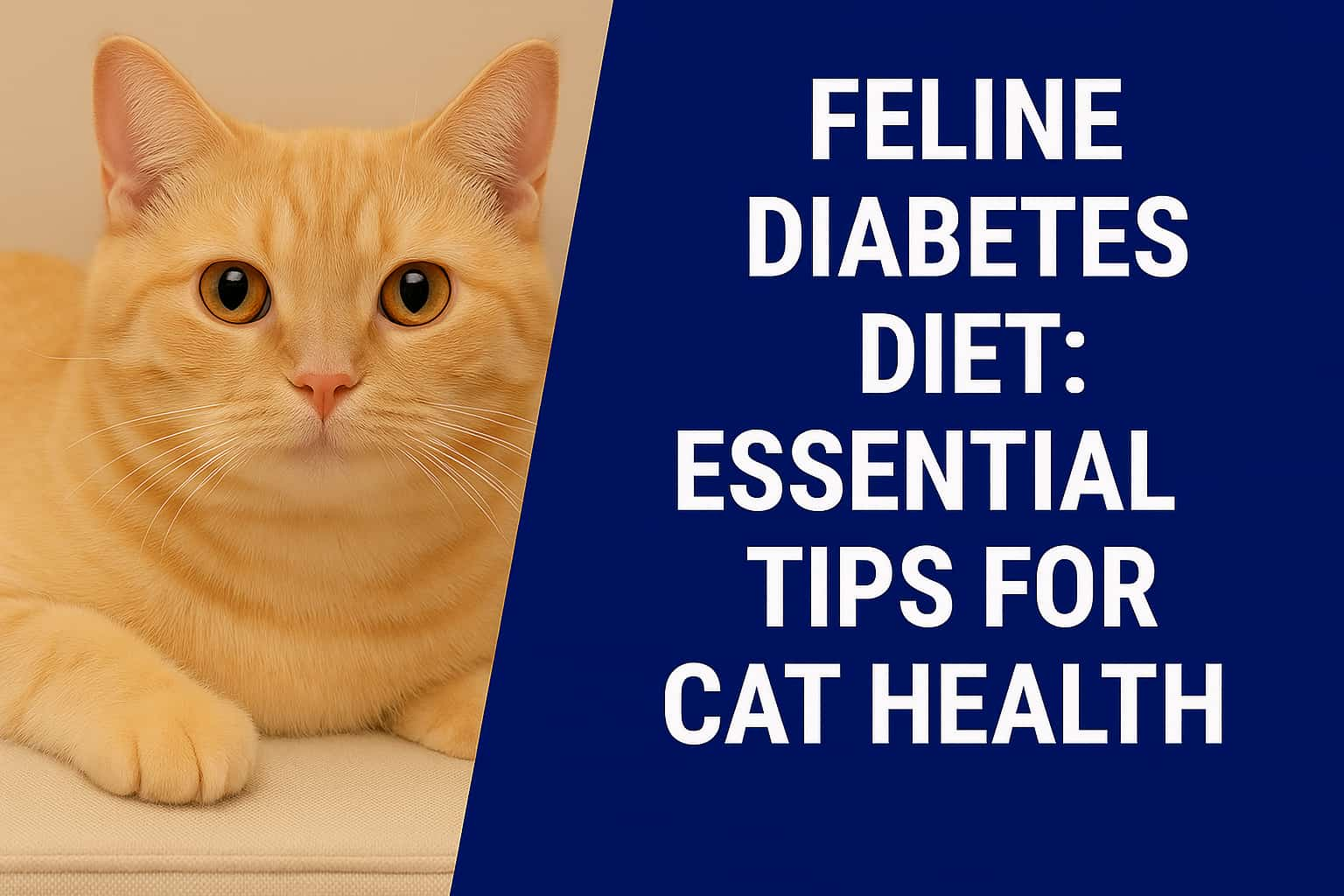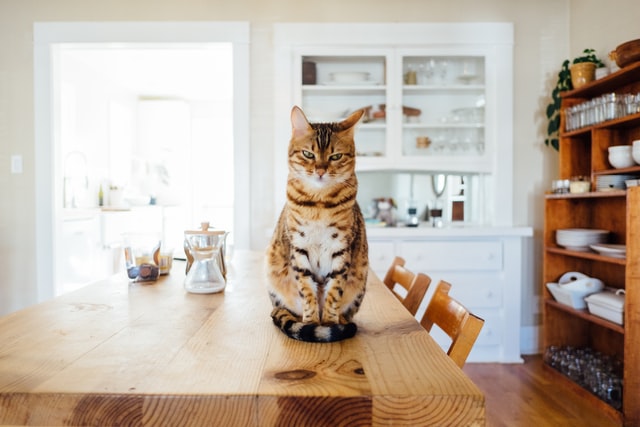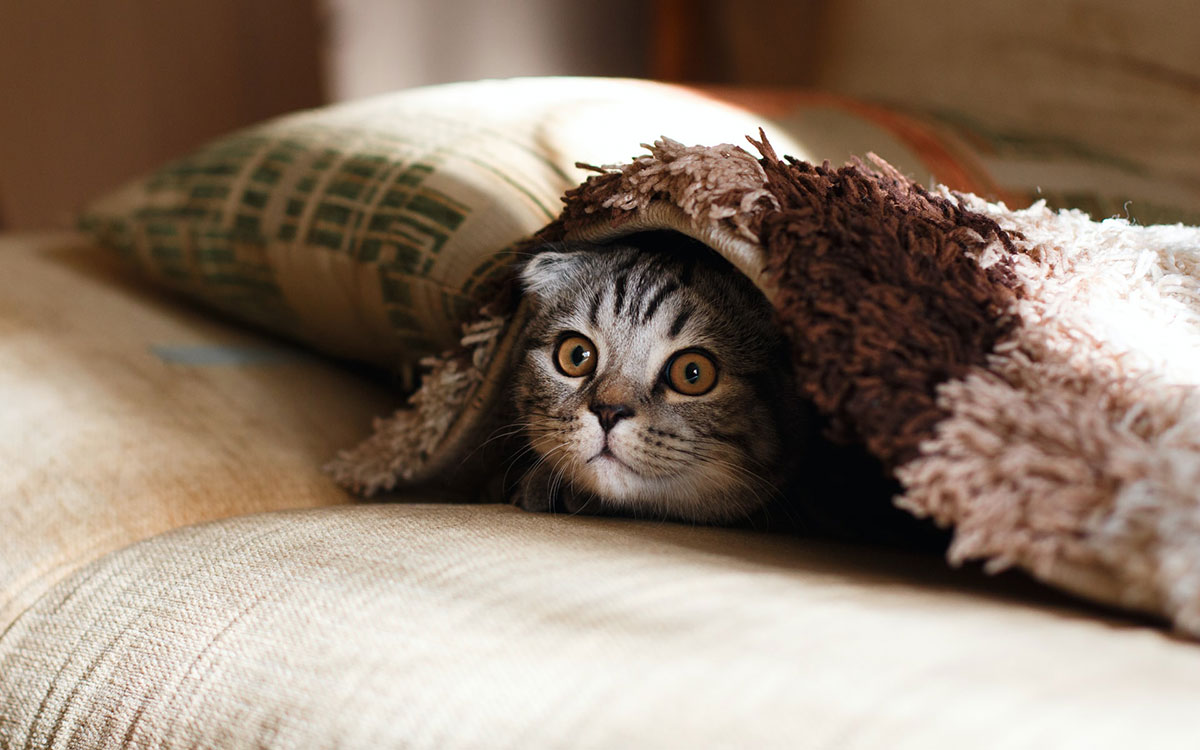Feline diabetes affects many cats worldwide. Diet plays a crucial role in managing this condition.
Understanding the best dietary choices for diabetic cats can significantly improve their health and well-being. A proper feline diabetes diet helps regulate blood sugar levels. It can also prevent complications. Many cat owners feel overwhelmed when dealing with their pet’s health issues.
Knowing what to feed a diabetic cat can be challenging. Diet affects blood sugar control, energy levels, and overall health. Cats with diabetes require a diet that is tailored to their specific needs. This guide will explore essential dietary tips. You will learn how particular nutrients can benefit your diabetic cat. Discover how to make informed decisions that support your cat’s health. Let’s dive into the world of feline diabetes diets to help your beloved pet thrive.

Dietary Needs For Diabetic Cats
Diabetic cats need special care. Protein is essential for them. It helps maintain their muscles. Fiber is good, too. It helps control blood sugar levels. Cats need water as well. It keeps them hydrated and healthy. Avoid giving too many treats. Treats can raise blood sugar.
Carbohydrates are tricky for diabetic cats. Too many carbs can be bad. They raise blood sugar quickly. Low-carb diets are better. They help keep blood sugar stable. Choose foods with complex carbs. These are digested slowly. They don’t cause big spikes in sugar.
Choosing The Right Cat Food
Some cats love wet food. It is soft and easy to eat. Wet food often has more water. This helps hydration. It may be better for cats with diabetes. Dry food stays fresh longer. It is crunchy. Cats that enjoy chewing tend to prefer dry food. Dry food might have more carbs. Carbs can be tricky for diabetic cats. Choose wisely. Find what your cat prefers. Balance is key.
Labels show essential details. Look for protein content. Cats need protein for strength. Low carbohydrates are crucial for diabetic cats. Check the fat levels. Some fat is good. Too much is bad. Find vitamins and minerals. They keep cats healthy. Some labels use hard words. Focus on the main ingredients. Avoid foods with too many fillers. Quality ingredients mean better health.
Importance Of Protein
Cats need a lot of protein. Their bodies use it for energy. A high-protein diet helps with muscle strength. It also keeps their fur healthy. Cats with diabetes need more protein. It helps manage blood sugar. Protein provides them with energy without causing sugar spikes.
Many foods give cats protein. Chicken is a good choice. Fish is another option. Eggs also provide protein. Beef can be used, too. Always cook meat before giving it to cats. Raw meat can be harmful. Consult a veterinarian about recommended protein amounts. Each cat may need different levels.
Managing Weight And Obesity
Controlling portions is vital for cats with diabetes. Small meals keep blood sugar stable. Use a measuring cup for food. Limit treats and snacks. They add extra calories. Regular feeding times help, too. Cats know when to expect food. This routine reduces overeating. Watch your cat’s activity level. Adjust food portions if needed.
Weight changes need careful watching. Weigh your cat often. Record the weight each time. Look for weight loss or gain. Sudden changes can signal health issues. Use a digital scale for accuracy. Consult your veterinarian if you notice significant weight shifts. They can help adjust the diet. Keep track of food intake. This helps spot problems early.
Incorporating Fiber
Dietary fiber helps cats feel full. This is good for weight management. Fiber slows sugar absorption. This helps maintain steady blood sugar levels. It can aid in digestion. Fiber helps prevent constipation. It promotes gut health. Cats with fiber in their diet may have better bowel movements. Fiber can reduce the risk of certain diseases. A healthy diet includes fiber. It is essential for diabetic cats.
| Food | Fiber Content |
|---|---|
| Pumpkin | High |
| Green Beans | Moderate |
| Sweet Potatoes | Moderate |
| Carrots | Moderate |

Hydration And Water Intake
Ensuring proper hydration is crucial in managing feline diabetes. Water helps regulate blood sugar levels and supports kidney health. Integrating moisture-rich foods into your cat’s diet can significantly help maintain optimal hydration.
Ensuring Adequate Hydration
Cats need enough water every day. Their bodies depend on it. Water helps their organs work well. It also keeps their skin healthy. A cat with diabetes must drink more. Their bodies lose water faster. Always provide fresh water.
Some cats don’t drink much. Place water bowls in different spots. This encourages them to drink. Make sure the bowls are clean. Cats prefer clean water. Watch for signs of dehydration. Wet gums mean good hydration. Dry gums mean less water intake.
Water-rich Foods
Foods with high water content are good. They help keep cats hydrated. Canned food has more water than dry food. You can mix water with dry food. Some cats like it this way. It softens the food and adds moisture.
Vegetables can be water-rich too. Offer small amounts, such as cucumber or spinach. But only give safe foods. Some foods can harm cats. Always check if food is safe for them to eat. Mixing food types can boost hydration. It adds variety, too.
Meal Timing And Frequency
Cats with diabetes need regular meal times. Feeding them at the same time helps regulate their blood sugar levels. It is essential to create a routine. Cats tend to feel better with a consistent daily routine. It also helps in giving insulin at the right time.
Blood sugar can change with each meal. Timely feeding keeps it stable. If cats eat at random times, their blood sugar levels can fluctuate. This can make them feel sick. A steady routine helps avoid these spikes. It is suitable for their health.
Consulting With A Veterinarian
Regular health check-ups are essential for cats with diabetes. A veterinarian can monitor your cat’s health. They check blood sugar levels and overall wellbeing. These visits help catch problems early. You can adjust the care plan if needed. Your veterinarian might suggest changes to your medication or diet. Keep a record of each visit. This helps track your cat’s progress.
Adjusting a diabetic cat’s diet based on their needs is crucial. Cats need a balanced diet. Foods with low carbohydrates and high protein are best. Your vet can guide you on what to feed. Each cat is different. Some may need notable food brands. Others might need portion control. Always follow the vet’s advice. It ensures your cat stays healthy.
Frequently Asked Questions
What Should I Feed A Diabetic Cat?
Feed a diabetic cat a high-protein, low-carbohydrate diet. Choose wet or canned food options. Consult your vet for specific recommendations and portion sizes. Ensure fresh water is always available to maintain hydration. Regular vet check-ups are essential for monitoring your cat’s health and adjusting its diet as needed.
How Long Will a 12-Year-Old Cat Live With Diabetes?
A 12-year-old cat with diabetes can live several years with proper care and treatment. Regular vet visits, insulin management, and a balanced diet are crucial. Early detection and treatment improve survival rates. Consult a veterinarian for personalized advice tailored to your cat’s health needs.
Is Canned Tuna Good For Diabetic Cats?
Canned tuna is not ideal for diabetic cats due to low nutritional balance. It lacks essential nutrients needed for their health. Consult a veterinarian for a proper diet plan tailored to your cat’s needs. Prioritize foods formulated explicitly for diabetic cats to ensure their well-being.
What Can I Feed My Cat With Diabetes Homemade?
Feed your diabetic cat high-protein, low-carb homemade meals. Include cooked chicken, turkey, or fish. Avoid grains and sugary ingredients. Consult your vet before changing your cat’s diet to ensure balanced nutrition and proper insulin management.
Conclusion
Creating a suitable diet for a diabetic cat is crucial. A balanced diet helps manage blood sugar levels. It also improves overall health. Consult a vet to tailor the best meal plan. Focus on low-carb and high-protein foods. Fresh water should always be available.
Regular check-ups are crucial for monitoring progress. Adjust the diet as needed. Understand your cat’s unique needs. With the proper diet, your feline can lead a healthier life. Keep their well-being a top priority. Stay informed and proactive for the best results.
🩺 Reviewed by Dr. Audrey Cook, BVM&S, DACVIM-SAIM, DECVIM-CA
Professor of Small Animal Internal Medicine
Texas A&M University, College of Veterinary Medicine
Dr. Audrey Cook is a globally recognized expert in veterinary endocrinology. With certifications in both U.S. and European veterinary medicine, she specializes in feline diabetes, insulin therapies, and chronic endocrine disorders. Her work influences best practices in clinics worldwide.






